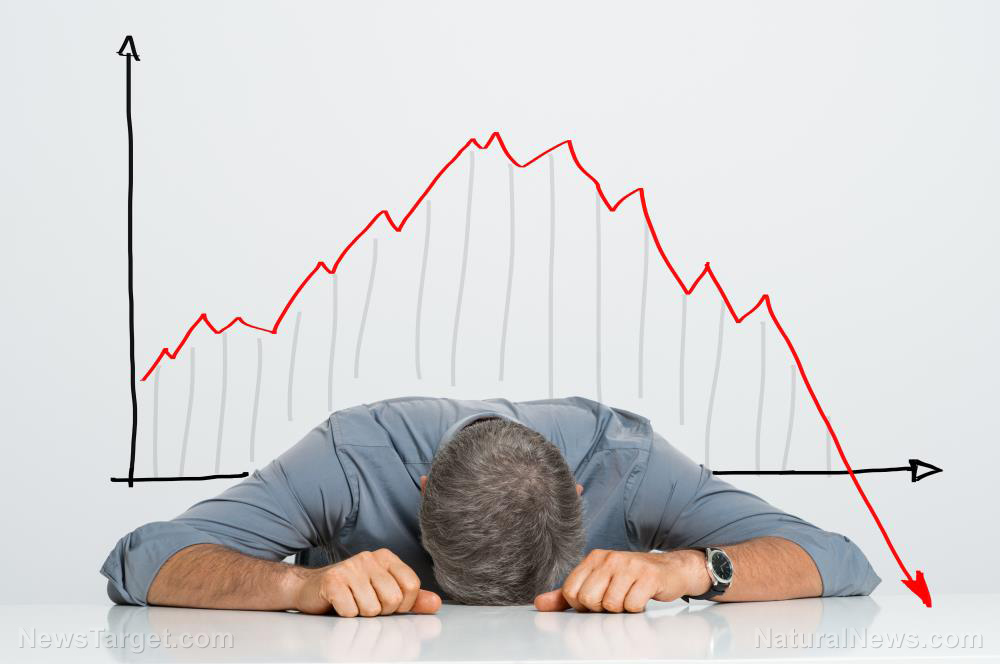
Since the start of the Wuhan coronavirus (COVID-19) "pandemic" nearly a year ago, the United States stock market has soared much higher than many anticipated based on the circumstances. And according to the latest data, it is more overvalued right now than it was at the start of the 2000 dot-com crash.
Right at the peak of the dot-com bubble before the bubble burst, the markets were overvalued by anywhere from around 170% to 200%. Today, the Q Ratio, which represents the total price of the market divided by its replacement cost, suggests that the markets are as much as 245% to 290% percent overvalued.
"Based on the latest S&P 500 monthly data, the market is overvalued somewhere in the range of 108% to 245%, depending on the indicator, up from 103% to 233% the previous month," writes Jill Mislinski for Advisor Perspectives, noting that this is based on an arithmetic mean assessment of the markets.
Using a geometric mean assessment, the range of overvaluation in the markets is somewhere between 125% and 290%, up from last month's 120% to 276% range.
Recognizing that these figures are not necessarily an indicator of what might happen in the near-term, they do suggest that the bubble is bigger than ever, and will eventually have to burst. The question that remains is when this might happen.
"As we've frequently pointed out, these indicators aren't useful as short-term signals of market direction. Periods of over- and under-valuation can last for many years," Mislinski explains.
"But they can play a role in framing longer-term expectations of investment returns. At present, market overvaluation continues to suggest a cautious long-term outlook and guarded expectations."
With the markets so heavily manipulated, is there really any way to know fundamentally where it's all headed?
Parts of the market are being driven by so-called "meme" stocks like GameStop (GME) that retail investors, tired of being screwed over by the illegal operation of hedge funds, are trying to buy and sell to their own advantage.
The bull run on GME sent the hedge funds, which had over-shorted the stock using illicit means, into a tailspin where they were forced to pull out all the illegal stops or else lose everything.
Trading on "amateur" platforms like Robinhood were halted for no reason, keeping the price of GME stock artificially lower than it should have been. This prevented the "short squeeze" that did still occur from becoming a much larger one.
There are still many holding on to GME awaiting next week's short report to try to determine where the stock is headed next. Some are still of the persuasion that the real short squeeze on GME has not yet occurred, though the data will make that clearer in the coming days.
Meanwhile, the mainstream media has been trying to steer all eyes away from GME and onto silver, which was driven up slightly before coming back down to roughly where it was in early January.
"Points of 'secular' undervaluation such as 1922, 1932, 1949, 1974 and 1982 typically occurred about 50% below historical mean valuations, and were associated with subsequent 10-year nominal total returns approaching 20% annually," says John Hussman about the current situation.
"By contrast, valuations similar to 1929, 1965 and 2000 were followed by weak or negative total returns over the following decade. That's the range where we find ourselves today. Of course, we also won’t be surprised if the S&P 500 ends up posting weak or negative total returns in the 2007-2017 decade, which would require nothing but a run-of-the-mill bear market over the next couple of years."
You can keep up with the latest news about the stock market and the way it is constantly being manipulated by the fat cats by visiting DebtCollapse.com.
Sources for this article include:
Please contact us for more information.





















